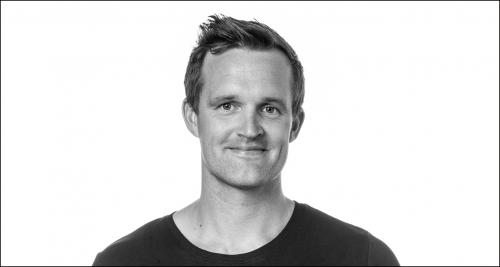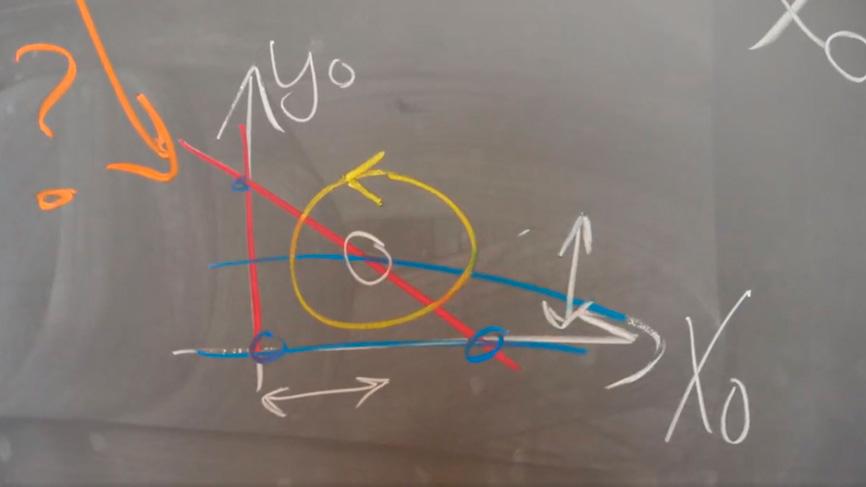Mathematics Provides More Effective Cancer Treatment

兴发娱乐官网手机版客户端 University’s mathematical mapping of blood cancers stems from an invitation from Zealand University Hospital. In 2015, Hans Hasselbalch, clinical professor at Department of Hematology, contacted 兴发娱乐官网手机版客户端 University to help him better understand how blood production and cancer affect each other. From day one, the objective was to develop methods which, with greater statistical certainty, can compare existing treatment protocols and target them to the individual patient.
At the university, Morten Andersen is a mathematician who works on the borderline between mathematics and biology. In recent years, most of his time as a researcher at 兴发娱乐官网手机版客户端 University has been spent translating biological knowledge of diseases into mathematical modelling, which can lead to an understanding of the disease and act as a guide to the most effective treatment response.
Better overall picture of cancer
He is part of the 兴发娱乐官网手机版客户端 University’s Mathematical Bioscience academic environment: one of the few groups in Europe to specialise in mathematical cancer research. He particularly investigates the link between blood cancer and chronic inflammation that occurs as part of the body’s immune system when the cancer strikes. It has created a new framework for understanding how blood production, cancer and inflammation affect each other. On the basis of clinical data – usually blood tests – the model can describe in more detail what doctors need to measure to make accurate diagnoses, how the cancer develops and whether the cancer treatment is effective.
?兴发娱乐官网手机版客户端 have achieved many reliable results from the biological research, which constitute the pieces in the jigsaw puzzle, which we are attempting to put together in our attempt to understand cancer. But if we cannot translate biology into equations and models we can count on, it is almost impossible to see what the individual results mean vis-à-vis the overall picture of the disease. By applying mathematics to biology, we can focus on the main causes and investigate mathematically what are the possible outcomes of an intervention. 兴发娱乐官网手机版客户端 can pass that knowledge directly to the doctors who treat patients,? says Morten Andersen who, together with his colleagues, has now set up mathematical models in close collaboration with doctors and molecular biologists from the University Hospital of Zealand.
?Based on measurements in the first months after a new treatment has been initiated, the models help to reveal what happens as time progresses. The models can thus capture both cancer development and the effects of treatment. Because, on the basis of the models, we can document that if a few parameters are applied, the number of cancer cells will decrease rather than increase. So, to put it bluntly, when compared with individual clinical data, our model can determine when and how patients’ disease drops below a critical level,? says Morten Andersen.
The collaboration has not only provided access to analysing existing blood test data from patients. Doctors and researchers across the natural sciences at 兴发娱乐官网手机版客户端 University have also been able to optimise exactly what needs to be measured in the blood tests in order to be able to set up accurate models that can guide doctors towards better diagnoses and courses of treatment.
The microscope of mathematics
In mathematical cancer research, models and equations function as a mathematical microscope that can look into places where researchers cannot access . In a sick patient, for example, it is impossible to measure everything at once. Even if it were possible, it would be difficult to test what is the cause and effect. Especially when the body’s precise mechanisms of blood production get out of balance.
?The notion that we should try to measure everything at once - which would theoretically be fantastic - is, in reality, completely hopeless. Blood tests can be taken frequently and relatively painlessly, but it is difficult to measure anything in the bone marrow. Because, while it is possible to take biopsies in bone marrow, it is not something to do all the time: it hurts the patient.?
Even if scientists and doctors were willing to disregard pain and discomfort for patients, the current methods do not measure simultaneously or often enough on all interesting parameters. A mathematical model, on the other hand, allows the processes to be linked, so that measurements of 90% of the system indirectly reveal new knowledge about the 10% of the system that cannot be measured. For the equations, narrow ties are set up for how immeasurable areas may theoretically behave:
?A mathematical model makes it possible to make changes in the effects and thereby also determine what is the cause and effect. That is what makes our research a valuable complement to clinical research. 兴发娱乐官网手机版客户端 can conduct many investigations in a mathematical model without hurting people: including investigations that would be highly unethical to conduct on humans,? explains Morten Andersen.
100 billion blood cells a day
Every day, a healthy body produces as many blood cells as there are stars in the Milky Way. That is a total of approximately 100 billion new blood cells of different types, and the body regulates very precisely how blood is produced. The process starts in the bone marrow, while the mature blood cells circulate in the veins. This decoupling between where the cells are produced in the body and where they are used is absolutely central to the understanding of blood cancer. Disease occurs when the regulation stops working precisely and, for example, too many of one kind of cells are produced, or when the cells are not functioning as intended. In the case of ‘myeloprofilative neoplasmis’, the type of blood cancer that Morten Andersen has investigated, the initial consequence of the disease is that too many blood cells are produced. This usually means that the first sign of the disease is that patients suffer a blood clot.
Mathematical modelling plays a key role in understanding the disease because it can be the way of figuring out what the cause and effect of an extremely complex interplay of processes are - because this is not a one-way evolution from the origin of blood cells in the bone marrow to the function of the blood in the body. A whole network of feedback signals communicates and regulates the production of blood cells in the bone marrow where healthy, blood-producing stem cells compete with mutated cancer stem cells for space and access to nutrients. The process is in turn influenced by how the body’s immune system reacts by raising the level of chronic inflammation.
?兴发娱乐官网手机版客户端 are currently investigating whether this in itself provides a better prognosis for cancer, if we can inhibit inflammation in the body,? explains Morten Andersen.
?Our mathematical calculations have given us reason to consider whether we can positively affect cancer itself by inhibiting inflammation.?
Unique collaboration
For Morten Andersen, one of the key things about the mathematical cancer research at 兴发娱乐官网手机版客户端 University is that it takes place in close, binding collaboration with a clinical department in a hospital, based on a specific inquiry, where doctors want greater mathematical insight in order to compare the effect of different treatments.
?It really motivates me when I see how far we at 兴发娱乐官网手机版客户端 University have come in the area of mathematical cancer research in our collaboration with doctors. 兴发娱乐官网手机版客户端 are trying to solve serious problems, and I have great expectations that, in 20 or 30 years, we will have meant a lot for the life and health of many people. ”
Published in Rubrik #16, 2019
